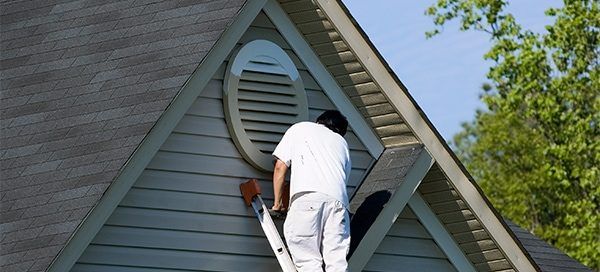When to Repaint Your Commercial Building

Every year, your commercial building takes a beating--hot summers, frigid winters, ice, snow, moisture, plus daily wear and tear all contribute to the deterioration of your property. Like all structures, your building requires regular upkeep to keep it looking good and well maintained. When the exterior paint of your building reaches the end of its service life, it can lead to:
- Rust
- Mold and mildew
- Cracks and holes
- Warping
- Exposed wood, metal and steel
What to look for
Knowing when to repaint is key to preserving its value and appearance. Unfortunately, many property owners fail to notice the signs of paint deterioration, which can result in extensive and irreparable damage. Most commercial exterior paints are designed to last from 3 to 10 years, depending on the building materials used, exposure to the sun, weather-tightness, and so forth. Here are signs to look for when determining when to repaint:
#1 Fading color
While newer acrylics hold their color longer, fading is inevitable over time. Mostly an aesthetic issue, it can also point to the need to repaint for other reasons. While you want your building to look good to your tenants and the public, when the paint begins to fade it is time to assess whether there are other problems areas needing correction.
#2 Chalking
Chalking occurs when a chalk-like powder forms on the surface of your building's paint film. Again, while modern and high quality acrylic paints rarely chalk, older products often do. This occurs as a result of weathering, which causes the binder to slowly degrade. If left unchecked, excessive chalking can:
- Seep into your building's brickwork and deface its surface appearance
- Erode the paint film
- Give the exterior paint a lighter look
#3 Mold and mildew
Are black, gray, or green stains starting to form on your building's exterior surface? If so, it's a sign of mold and mildew growth. This occurs as a result of poor air circulation and excessive moisture. Mostly unsightly, these can also have an adverse effect on people's health.
#4 Cracking paint
Another sign of paint deterioration is the appearance of web-like cracks in the paint film. This is common for buildings with many coats of paint. Also called alligatoring, these cracks can spread across large areas of your building and lead to paint chipping or peeling. Moisture then can enter through the cracks and gaps and lead to rotting wood, rust (if ferrous metal), and spalling (if concrete or brick). A
#5 Bubbling paint
Also called blistering, bubbling is the localized loss of paint adhesion as a result of:
- Applying the paint on a hot surface or under direct sunlight
- Exposing the paint film to rain or high humidity after being applied
- Escaping moisture that's trapped inside the wall
- Poor preparation by the previous paint contractor
#6 Efflorescence
Efflorescence is a white, chalk-like substance collecting on the surface of masonry products. These are salts that are common to concrete, brick, and block and result from moisture penetration and heat. Mostly unsightly, these salts can also cause paint to blister and peel.
If you're not sure if your commercial building needs repainting, contact T. L. Hart can help you. Our experts can inspect your property, identify any potential issues with its exterior paint job, and recommend the ideal solution. To learn more about our commercial painting services, give us a call today.
Do you need painting advice?
Ready to take the first step? Get a free, detailed estimate for your painting project today! Customer satisfaction is our number one priority, and we're ready to get to work for you! Click on the button down below and request a free quote.









